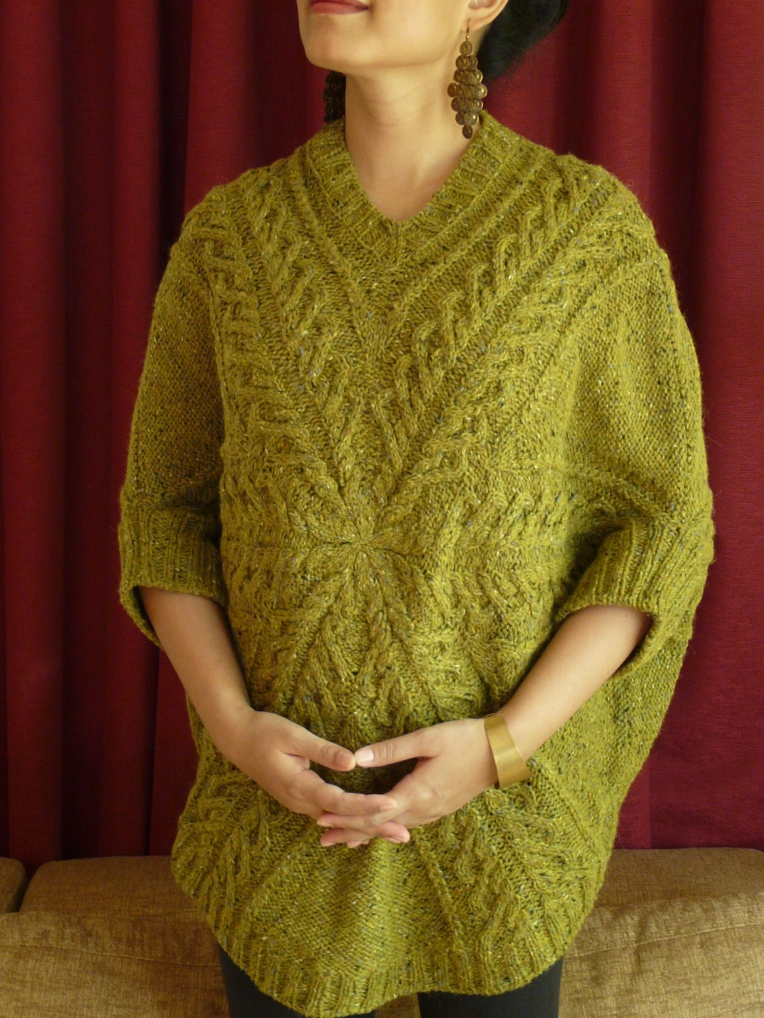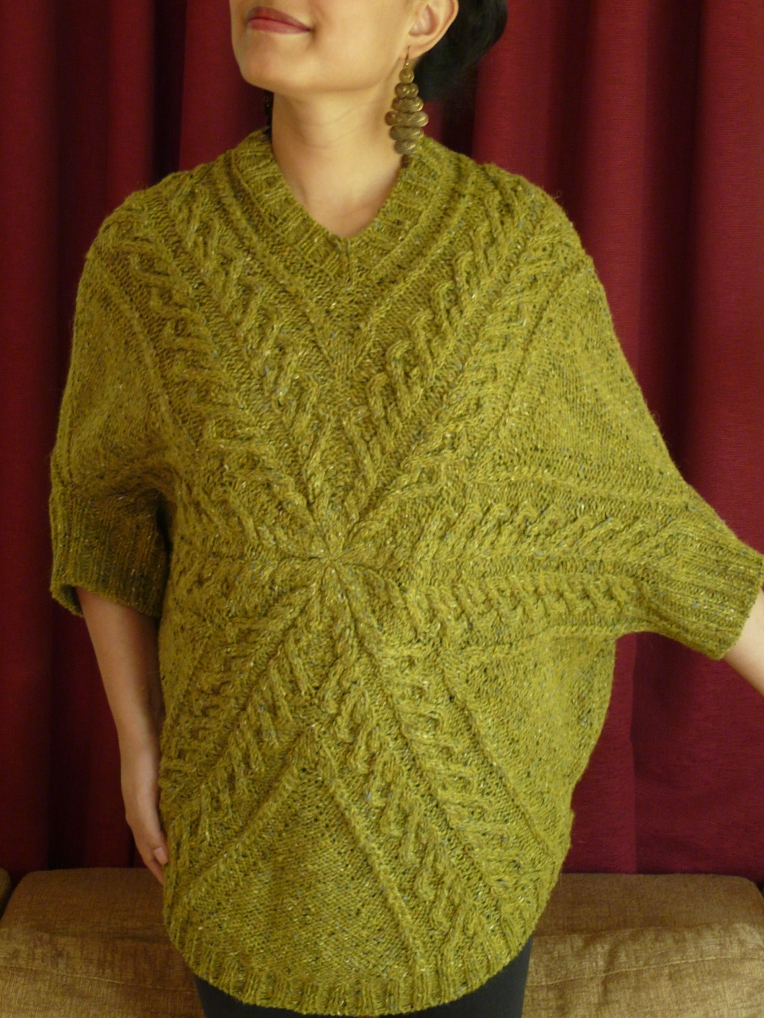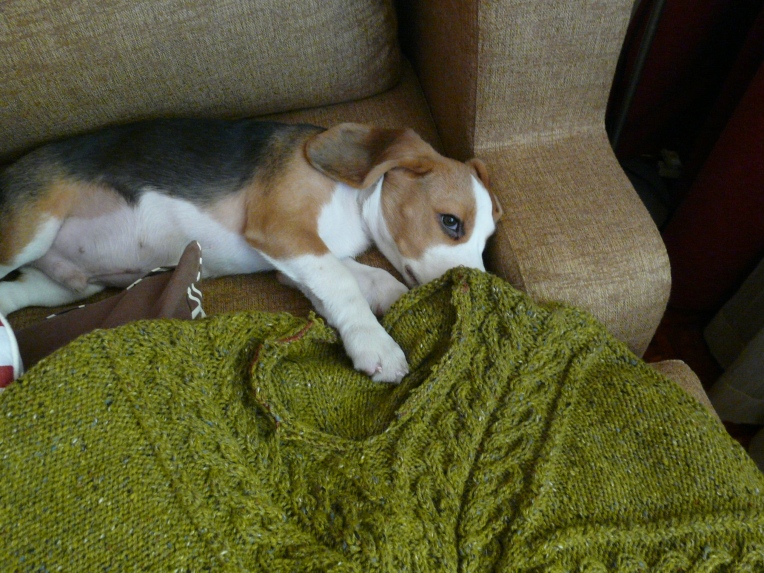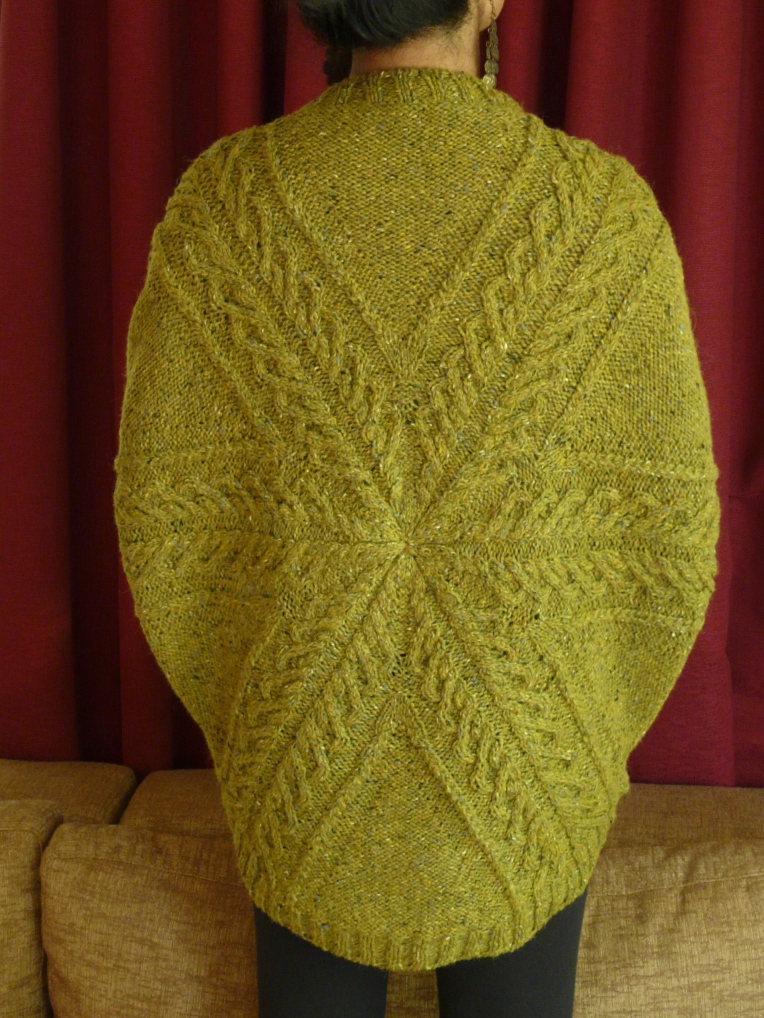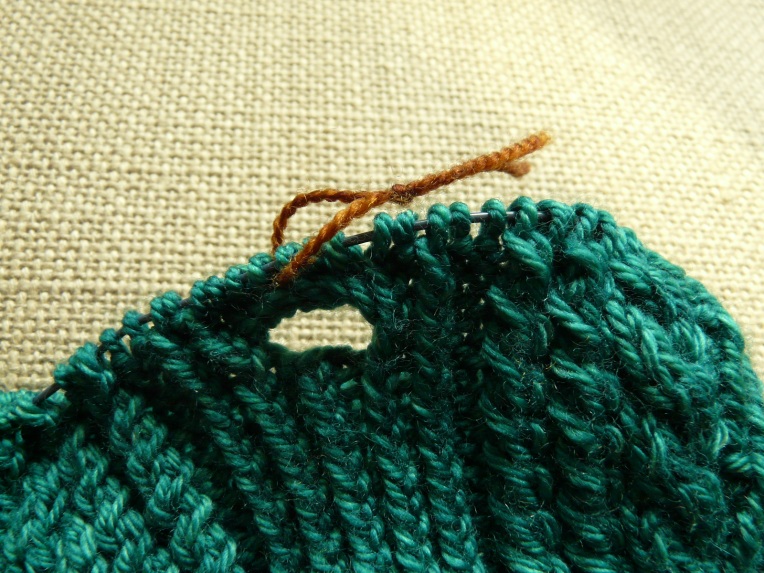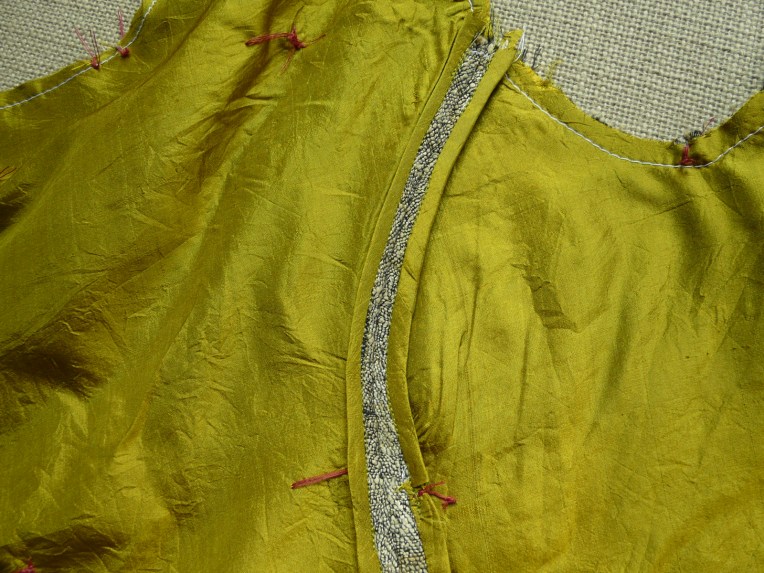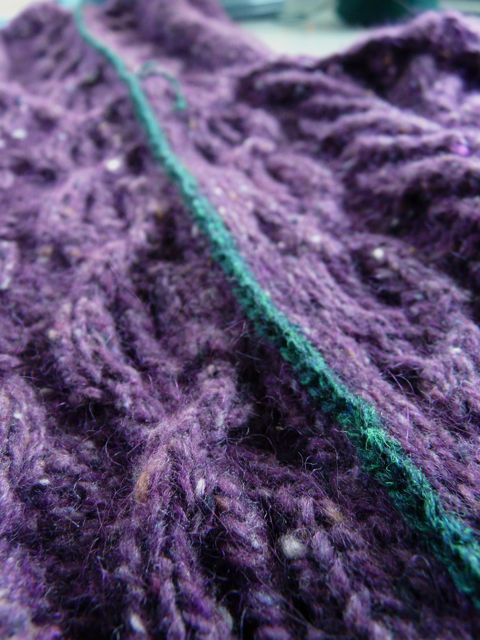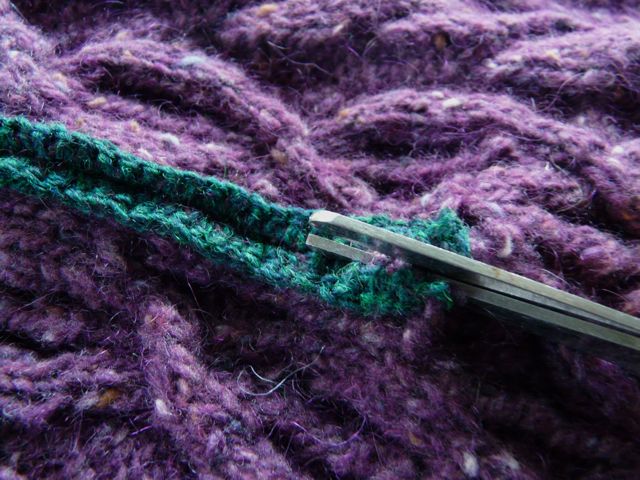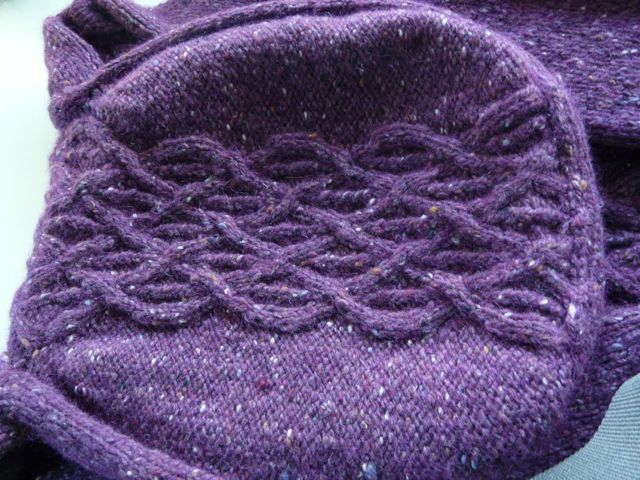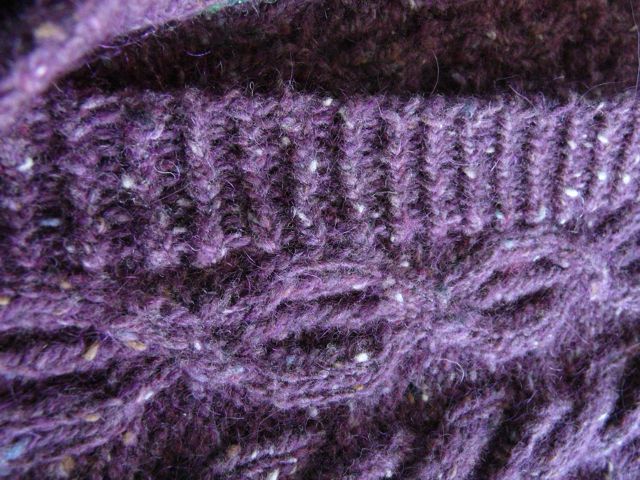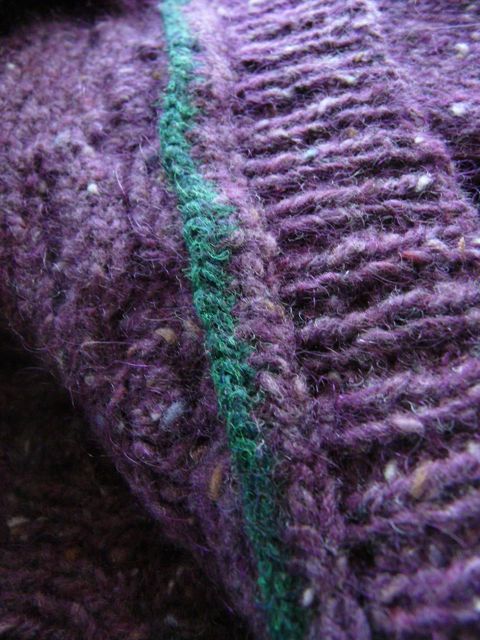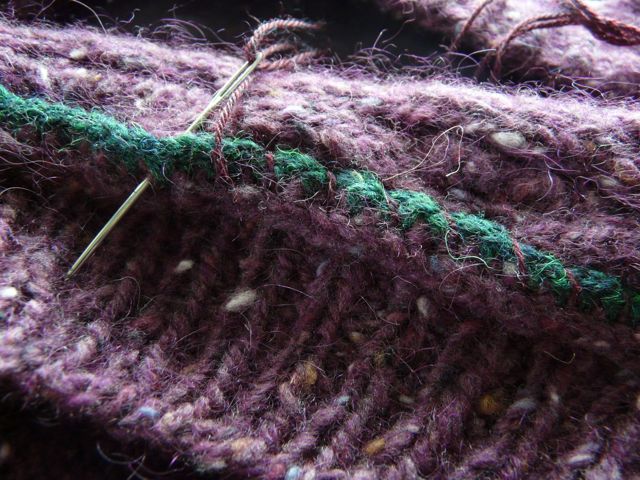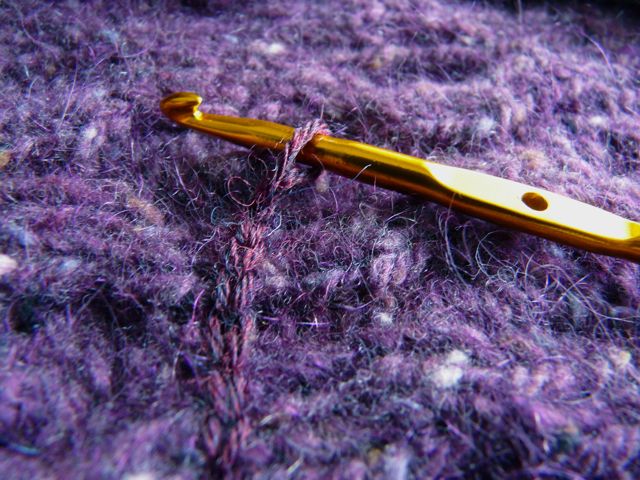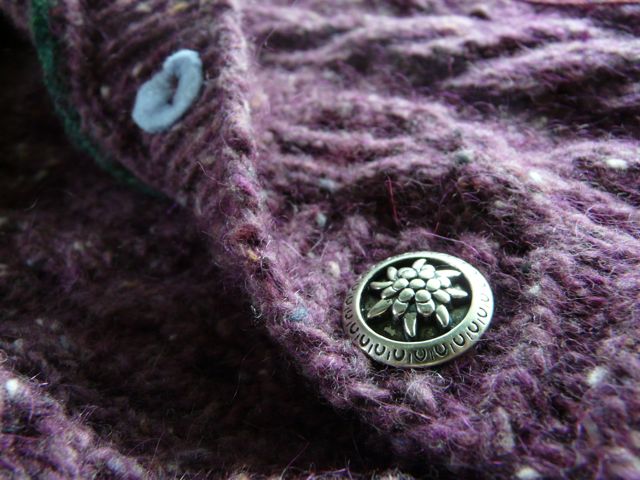The Beatnik hood is knitted, but will it fit? This is the maddening and alluring thing about steeks, you never know if the garment be perfect or horrid until after cutting, at which point the yarn is unsalvageable. But let us be brave and trust in Gauge and Calculations.
Knitted hoods usually come in two flavours . They are either:
a) Round and clingy, following the curve of the lower skull, fitting tightly around the head and framing the face. This makes the wearer look oddly hairless, as if they were preparing to be strapped into a space suit. Of course, a sweater designed to seal in body heat must stay close to the face, but there’s no need to cling so tightly that a phrenologist may be able to work through it.
b) Drapey and pointy, in the style made trendy by the high elves out of Lothlorien. Excess fabric drapes gracefully down and pools around the shoulders. The crown is sometimes sharply pointed, but with so much fabric that even the point arcs downwards. Very costumey and — more to the point — so much more knitting to do!
I find both ends of the hood spectrum equally undesirable and wanted a happy medium. A rounded crown and moderate roominess; some heat-sealing around the face but not a vacuum sealed appearance. I think I mostly succeeded, although there are a couple of puffy bits at the back of the head, showing I should have done the crown shaping sooner.
Here’s how to calculate one for yourself:
Measure horizontally around the widest part of your skull = A.
Measure how wide you want the face opening to be = B.
How wide is your edging going to be? C. (I’m going to add about 3/4″ in ribbing)
How wide is the existing front panel? D. (front panel = sts carrying on upward from the fronts of the cardigan + shoulders)
Half length of the hood, from shoulder to the middle of the top of the head (where a middle parting would be) = T
Half horizontal width of the top of the hood, measured in a straight line from above one ear to the middle parting = H
Half hood vertical height = T-H +1inch (for ease) = V
1. With the above information, calculate the back of the hood, at the widest point should be E = A – (B + 2C + 2D)
2. Knit the garment up to the point where you want the hood to attach. Decide how you’re going to add the very necessary reinforcement to the base of the hood. Some patterns have you bind off back neck sts and then pick them up on the next row. I’m going to add sewn reinforcing, so I’ll just keep knitting.
3. Look at the sts you have at the back of your sweater. If you are planning to attach the hood at the middle of the shoulder, then you may already have E width of stitches at the back. But if you’ve knitted your sweater up to crew neck level, your back neck stitches are going to be less than E.
4. If you don’t have E width, calculate, using your gauge, how many stitches you need to add to the back to bring it to E width . If you have E width, you just work straight up, so skip to step 6.
5. If you do have to add some sts to the back neck (ie, your back neck sts were less than E), add them at a very quick rate, even as much as 6 sts per row, if your pattern allows. I added them by increasing the reverse stockinette section between the back cable and shoulder saddle. If you don’t add them quickly, the hood will cling to the curve of the lower skull, which is a look I don’t like. See how the reverse stockinette increases dramatically in the few rows above the shoulder?

6. Once all sts are added, calculate how much length you need to reach V-1″ and work these rows straight. It should now look like this:

7. In the next one inch, decrease away extra sts added, in the same sections you added them in step 5. If you didn’t add any sts because you were starting with a broad circumference at the bottom, you still have to decrease until you’re left with front panel (D)+actual back neck width+front panel (D) sts. At the end of this step, your hood will be V inches high with only D + actual back neck width + D stitches left.
8. Starting from the face opening edge, work across one front panel, working the last stitch of the panel together with nearest stitch from the back. Turn, slip the first stitch and work back to the face opening edge. Continue till half the back sts have been consumed. Then break the yarn and repeat the process with the other front panel and the remaining back sts.
9. When all back sts have been consumed, graft the two front panels together at the top of the head or join with a 3 needle BO. The top of the hood now looks like this:

The stockinette panels from the saddle shoulders and the remainder of the front cable have met at the top of the head.
10. Wash, block, add finishing to the edge and admire your hood!

(Confession: because mine was steeked, my last step was different. More pics soon!
